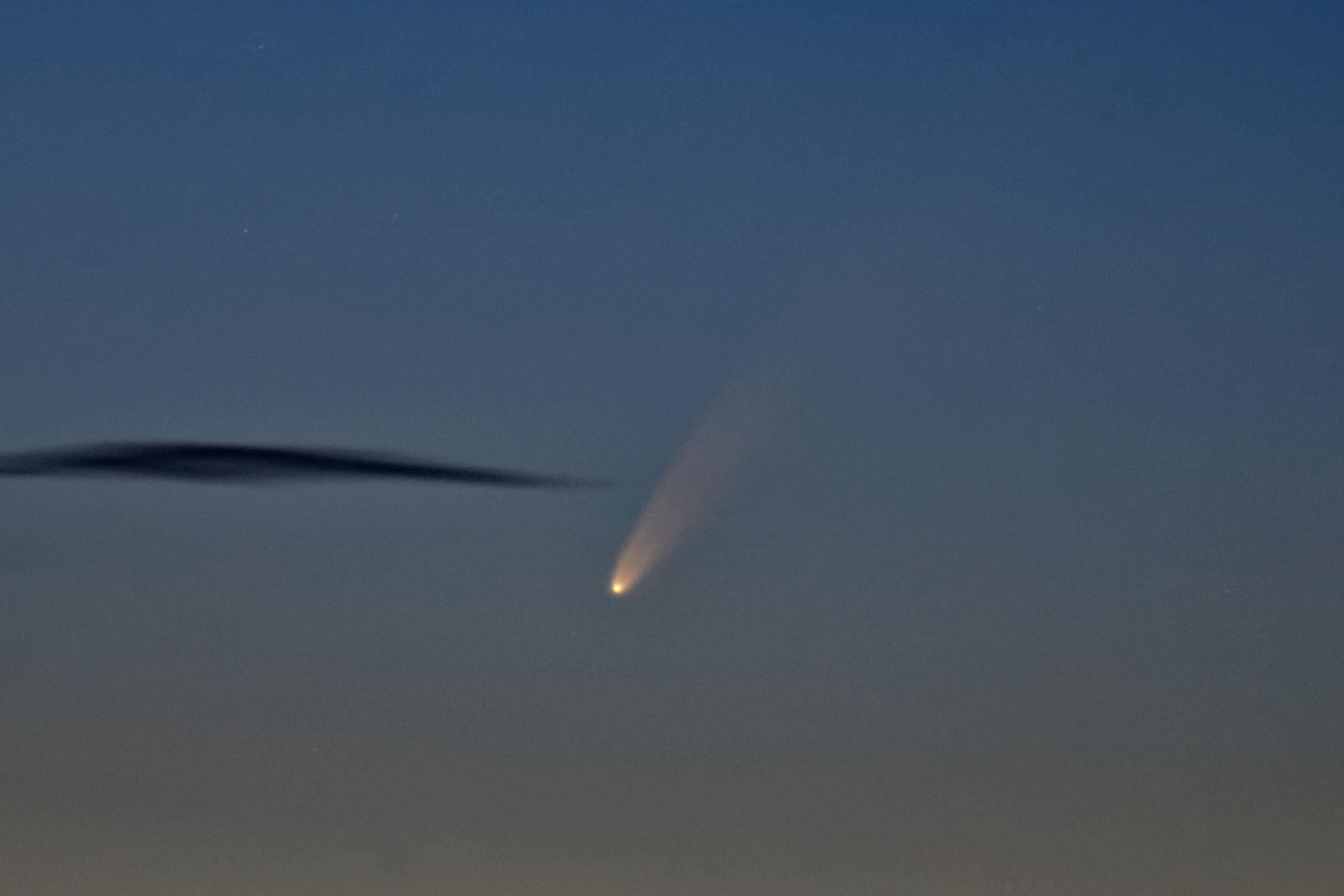Comet Neowise: How to see blazing comet after surprise appearance means it can be spotted with the naked eye

A blazing comet has suddently appeared in the night sky – and you can see it with the naked eye.
Neowise was first spotted in March, when it was too dim for anyone to spot easily. And astronomers feared that it could fall victim to the same destruction that led to disappointment for other objects this year, such as Comet Atlas, which broke up as it passed by the Sun.
But Neowise survived its own encounter with our star, late last week, sailing past so close that it tucked inside Mercury's orbit. Now it is back on its way to the far reaches of the solar system – and will swing past Earth as it goes.
The comet is now one of the few comets that can be seen with the naked eye this century, and will be hanging around through July to give stargazers a chance to spot it.
Because Neowise is a comet, behind it blazes a trail that can actually prove easier to see than the object itself. So when you are looking for it, keep an eye out for that long streak, and you should be able to track the comet back to there.
The easiest way to find Neowise's place in the sky is to look out for the more familiar stars and constellations that it is situated around. It will gradually move through the month, but should be relatively easy to locate among its neighbourhood – and apps like the Night Sky app will make it easier to identify those constellations, if you are struggling.
The long nights and early mornings of the summer time mean that it can be hard to find a time where the sky is dark enough to allow Neowise to shine bright enough to spot it. That effect has led to some spectacular photos – as Neowise is lit up against the glow of the evening – but means you may have to work a little harder, either to try and spy it late at night or to spot it against the lighter sky.
While the object is now bright enough to be spotted with the naked eye, doing so may still be difficult. It may be easier to still use binoculars to find the comet – but then once it is located, lower them and have a look without being aided.
Over the month, as the closest flyby on 23 July approaches, the comet will not only move but should also become a little easier to spot in the sky. The nights will also draw in, leaving more time in the day during which the sky is dark enough to spot it.
Subscribe to Independent Premium to bookmark this article
Want to bookmark your favourite articles and stories to read or reference later? Start your Independent Premium subscription today.

Join our commenting forum
Join thought-provoking conversations, follow other Independent readers and see their replies